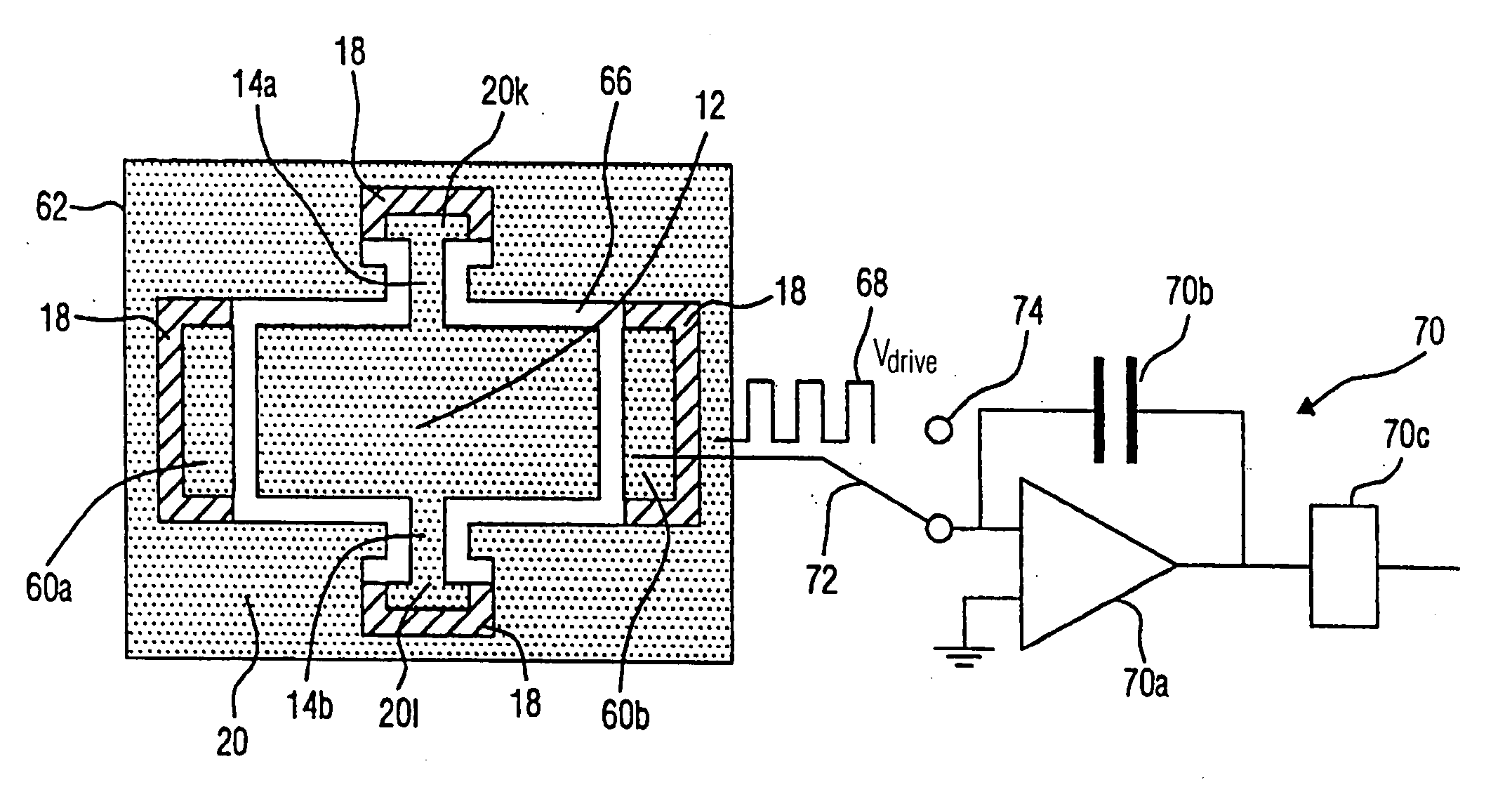Micromechanical element having adjustable resonant frequency
a micromechanical element and vibration frequency technology, applied in the direction of dynamo-electric machines, electric generators/motors, speed measurement using gyroscopic effects, etc., can solve the problems of only possible tuning, irreversible tuning, and obvious tuning, so as to achieve less complicated effects
- Summary
- Abstract
- Description
- Claims
- Application Information
AI Technical Summary
Benefits of technology
Problems solved by technology
Method used
Image
Examples
Embodiment Construction
[0029] Before the present invention will be explained subsequently in greater detail referring to the appended drawings, it is to be pointed out that the drawings are not to scale for better understanding. Additionally, same elements are provided with same reference numerals in the figures, a repeated description of these elements being omitted.
[0030]FIG. 1 shows an embodiment of a vibrating system of a micromechanical element, which is generally indicated by 10, where the present invention may be implemented, as will be explained subsequently. The micromechanical element 10 of the present embodiment represents a micromechanical mirror as is, for example, employed in micro-scanners to deflect a modulated light beam having a predetermined set frequency to move the light beam back and forth in an image field with the set frequency, whereby an image is generated on the image field by the modulated light spot moved on the image field. It is, however, pointed out that the present invent...
PUM
 Login to View More
Login to View More Abstract
Description
Claims
Application Information
 Login to View More
Login to View More - R&D
- Intellectual Property
- Life Sciences
- Materials
- Tech Scout
- Unparalleled Data Quality
- Higher Quality Content
- 60% Fewer Hallucinations
Browse by: Latest US Patents, China's latest patents, Technical Efficacy Thesaurus, Application Domain, Technology Topic, Popular Technical Reports.
© 2025 PatSnap. All rights reserved.Legal|Privacy policy|Modern Slavery Act Transparency Statement|Sitemap|About US| Contact US: help@patsnap.com



